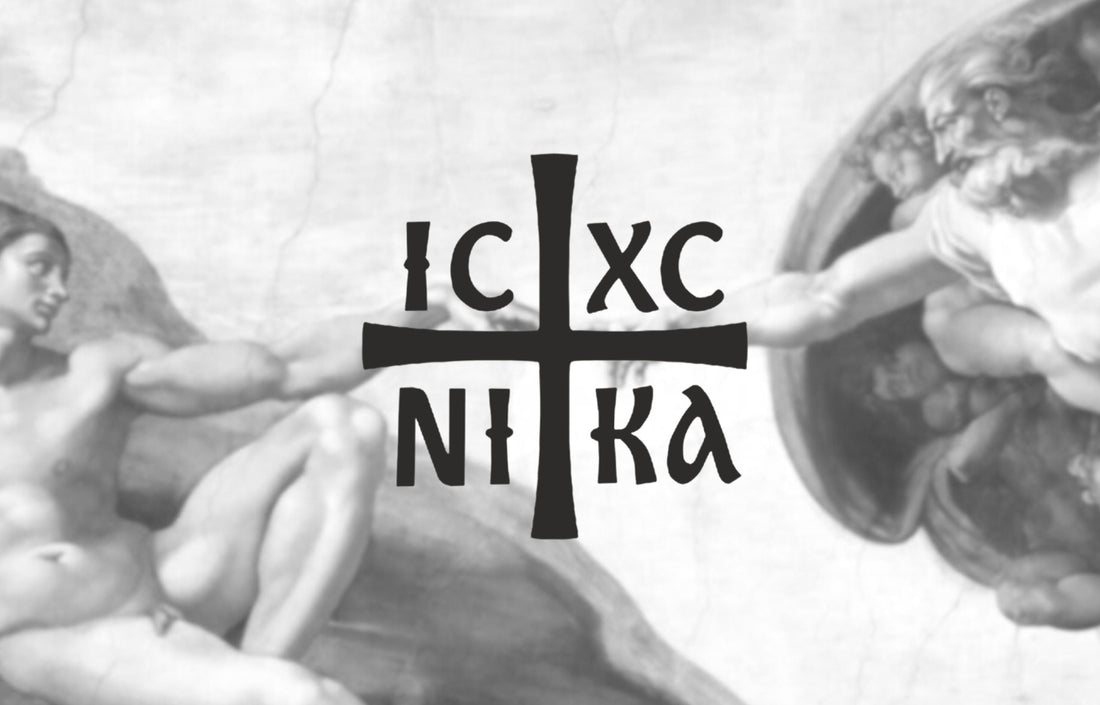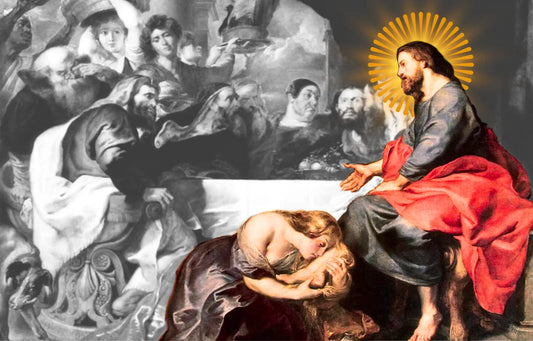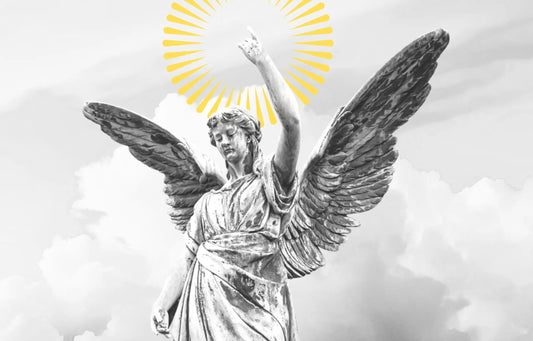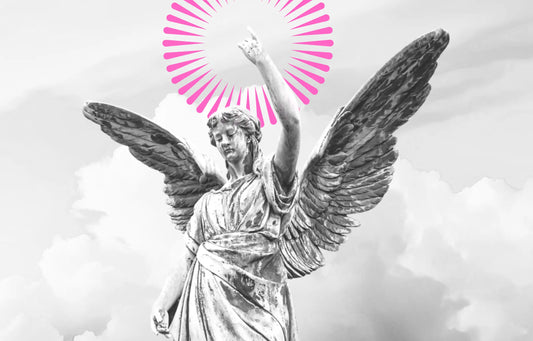ICXC NIKA is a Christogram—a sacred Christian symbol formed from Greek letters—that means “Jesus Christ Conquers.” This symbol is prevalent in Eastern Orthodox & Byzantine Catholic Christianity, often seen on icons, vestments, and church architecture.
What Does ICXC NIKA Mean?
- IC stands for ΙΗΣΟΥΣ (Iēsous), the Greek for Jesus.
- XC stands for ΧΡΙΣΤΟΣ (Christos), meaning Christ.
- NIKA is from the Greek ΝΙΚΑ, which means “conquers” or “is victorious.”
This phrase has been central in Christian symbolism since the early church. It isn’t a slogan—it’s a theological declaration of Jesus’ victory over death, sin, and evil, encapsulating the essence of Christian faith.
Historical Origins of ICXC NIKA
Byzantine Genesis of the Christogram
The Christogram ICXC NIKA finds its earliest and most widespread use within the Byzantine Christianity ecclesiastical and imperial context, emerging between the 4th and 7th centuries AD.
Within the theological and cultural framework of the Eastern Roman Empire, such symbolic expressions held immense didactic value, particularly amid widespread illiteracy and the persistent threat of doctrinal deviations.
The Role of Coinage in Sacred Imperial Propaganda

One of the earliest material attestations of ICXC NIKA appears on the gold solidus and tremissis coins of Emperor Justinian II (r. 685–695; 705–711 AD).
These coins feature a front-facing image of Christ, robed and crowned, holding the Gospel Book and extending a gesture of blessing. Flanking His visage are the abbreviations IC and XC, while the term NIKA is often inscribed below or alongside.
This deployment of Christological imagery on state currency was a deliberate act of imperial theology. It asserted both the divine sanction of imperial rule and the eschatological triumph of Christ over all worldly powers.
In a period marked by Christological controversies—such as Monothelitism and iconoclastic agitation—the iconography on coinage functioned as public catechesis, reinforcing orthodoxy through quotidian artifacts.
Notably, Justinian II was the first emperor to portray a lifelike image of Christ on coinage, a move that provoked tension with both internal iconoclasts and external Islamic authorities, who rejected anthropomorphic depictions of the divine.
Iconography and Liturgical Integration
Beyond imperial coinage, ICXC NIKA became a pervasive motif in Byzantine religious art:
- Mosaic programs in churches such as Hagia Sophia incorporated the Christogram as part of Christ Pantokrator depictions, often in the apse or dome, symbolizing cosmic sovereignty.
- Liturgical vestments and altar furnishings bore the abbreviation, embedding doctrinal assertions within the visual and tactile elements of worship.
- In illuminated manuscripts, ICXC NIKA regularly adorned the incipit pages of the Gospels, particularly in the Eusebian canon tables and lectionary headings.
These applications were not merely ornamental; they constituted a visual theology accessible to both clergy and laity.
Visual Catechesis and the Theology of Perception
As Eastern Christianity placed increasing emphasis on the pedagogical role of iconography, symbols such as ICXC NIKA assumed a catechetical function.
Theologian and church historian Fr. John Meyendorff emphasizes that such visual formulae acted as “a catechism for the illiterate,” enabling the faithful to internalize doctrinal truths through consistent visual exposure.
The power of symbols in the Byzantine Empire was not optional; it was essential.
In contrast to Western stained-glass windows, which communicated biblical narratives, ICXC NIKA distilled the core kerygma—Christ has conquered—into a compact and universally recognized sign.
Orthodox and Catholic Traditions
Eastern Orthodox Use
In Orthodox churches, ICXC NIKA is central:
- It’s engraved on the communion bread (prosphoron)
- Seen on the pantokrator icons (Jesus as Ruler of All)
- Placed above or around crucifixes to emphasize Christ’s triumph
The phrase is more than decoration—it’s theology expressed visually. Orthodox iconographer George Kordis calls it “visual doctrine.”
Catholic Tradition
While less common in Roman Catholicism, ICXC NIKA is still present:
- In Eastern Rite Catholic Churches (e.g., Ukrainian, Melkite)
- In medieval art and illuminated manuscripts
- On relics and Latin-Greek hybrid crosses
Fun fact: the ICXC NIKA cross differs from the Latin crucifix. It’s more symmetrical, often with a circular halo around Christ’s head and the abbreviation clearly visible.
Theological Implications of "Jesus Christ Conquers"
The phrase "Jesus Christ Conquers" is not merely a statement but a profound theological assertion.
- Victory Over Sin: Emphasizes Christ's role in redeeming humanity.
- Triumph Over Death: Affirms the resurrection as a cornerstone of Christian belief.
- Spiritual Warfare: Encourages believers to view their struggles as part of a larger spiritual battle, with Christ as the ultimate victor.
Scripture Mentions of Christ’s Victory
The phrase ICXC NIKA—“Jesus Christ Conquers”—isn’t just a slogan rooted in Church tradition. It’s a distilled summary of what the Bible proclaims from Genesis to Revelation: Christ wins.Here are some of the clearest scriptural echoes of the ICXC NIKA message:
1. John 16:33 (ESV)
In the world you will have tribulation. But take heart; I have overcome the world.
This is perhaps the most direct statement from Jesus affirming His victory. The Greek verb νενίκηκα (nenikēka)—“I have overcome”—shares its root with NIKA. It’s not just a hopeful future; it’s a present reality.
2. Revelation 5:5
Behold, the Lion of the tribe of Judah, the Root of David, has conquered, so that he can open the scroll and its seven seals.
In apocalyptic literature, this image of Christ as the victorious Lion is a powerful symbol. He conquers not by war, but by sacrificial love.
3. 1 John 5:4–5
For everyone who has been born of God overcomes the world. And this is the victory that has overcome the world—our faith.
Here, the victory of Christ becomes our victory, through belief. This is where ICXC NIKA becomes more than a Christogram—it becomes a personal identity marker.
ICXC NIKA in Contemporary Christian Culture

In modern times, ICXC NIKA has transcended its liturgical origins, finding a place in everyday Christian life.
- Apparel: Brands like Gracefiber incorporate the symbol into clothing, allowing believers to express their faith publicly.
- Jewelry: Worn as a personal reminder of Christ's presence and victory.
- Tattoos: Some choose to tattoo the symbol as a permanent testament to their faith.
Living the Message of ICXC NIKA
Embracing the meaning of ICXC NIKA involves more than wearing a symbol; it's about embodying its message.
1. Renew Your Mind Daily
“Be transformed by the renewing of your mind.” – Romans 12:2 Victory starts in your thinking. Every time anxiety hits, the truth of ICXC NIKA becomes your shield.
2. Fight Temptation with Truth
Temptation thrives in lies. ICXC NIKA reminds you the battle is already won.
Practical tools:
- Scripture memorization (e.g., 1 John 5:4, 1 Corinthians 10:13)
- Accountability apps and groups
3. Teach It to the Next Generation
Whether you're a parent, mentor, or youth leader—ICXC NIKA is a powerful message to pass on.
- Teach it during family devotionals
- Use it in confirmation classes or Bible journaling workshops
Conclusion: ICXC NIKA Isn’t Just a Symbol—It’s a Daily Reminder
As we reclaim powerful symbols like this one, we’re not just wearing history—we’re living it. It’s a reminder that:
- Your battles are already won in Christ
- Faith isn’t passive—it’s an active stand in a broken world
So next time someone asks what “ICXC NIKA” means? Tell them: “It means Jesus Christ conquers—then, now, and forever.”














